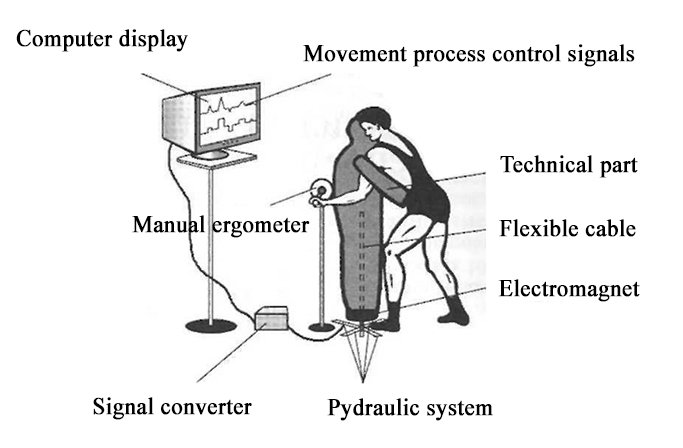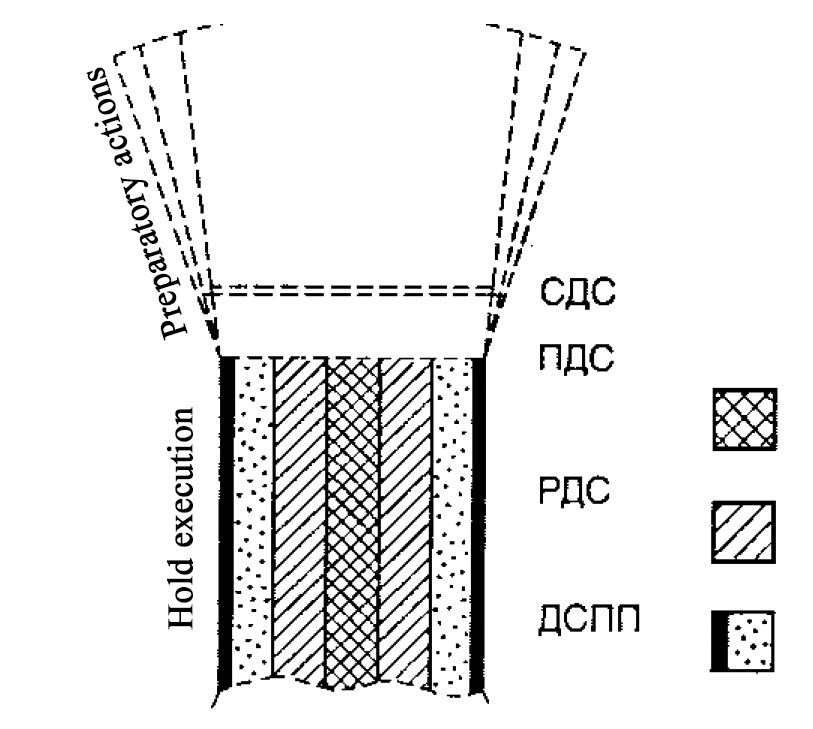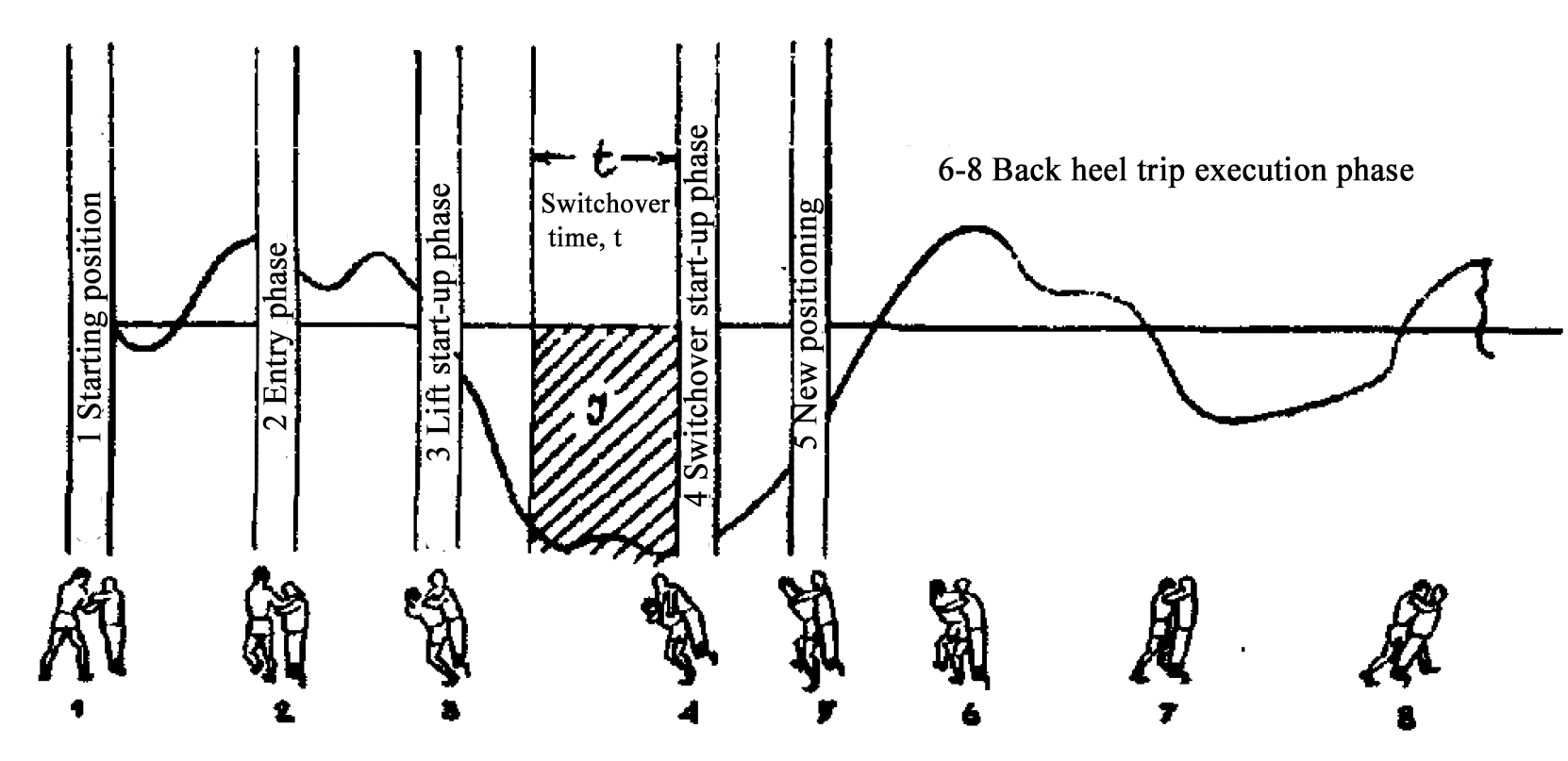Innovative theoretical and practical support for competitive progress of highly-skilled athletes
Фотографии:
ˑ:
Dr.Hab., Professor A.A. Novikov1
PhD, Associate Professor G.F. Vasilyev1
PhD, Associate Professor E.Y. Krupnik1
PhD S.V. Karaulov1
1All-Russian Scientific Research Institute of Physical Culture and Sport, Moscow
Keywords: athletes, martial artists, system, qualification, elements, mastery, control, process, rating, implementation, preparation, training.
Background. Modern elite sport excellence system management process is to be designed to give a top priority to the elements of the triune system being closely linked and effectively harmonized to secure good competitive progress; plus the efforts to develop and implement modern progress rating and control system including the relevant sport-specific theoretical and practical support (TPS) simulators.
Objective of the study was to provide theoretical substantiations for the three-level training system for highly-skilled athletes.
Study results and discussion. The three-level training system concept may be successfully implemented conditional on the elements of the system being duly harmonized and customized to the individual traits of the athletes, their mastery levels and interests of influence on the competitive progress [1-3].
For the competitive progress rating/ control purposes, we propose using a computerised TPS that models movement sequences of the subject sport (see Figure 1) and includes toolkits for the training program plus specific software tools to obtain the following: (а) biomechanical characteristics of the actions; (b) throws per cycle and per bout; (c) average pressure on the dummy per bout; (d) presses/ repeat presses per bout; (c) workload per training session etc.

Figure 1. Training simulator
The process parameters are read and managed to keep them in line with the sublimit values and optimal rates obtained in practical competitions. Special performance tests are applied to identify the sublimit values and use them for the training regimes and settings in every minute of the workout on the simulator, the regimes being managed close to the competitive performance rates. The process data make it possible for the coach and test team to make due adjustments to the individual highly-skilled athletes’ (HSA) training plans.
In the present situation when competitive accomplishments have virtually come to the upper limit of natural human abilities, the HSA competitive fitness needs to be rated by precise sport-specific movement sequence controls – and not only by tests classified by research disciplines (like teaching, medicine, psychology etc.) or designed to test wrestlers’ mastery aspects (techniques, tactics, physical fitness etc.), but rather by an integrated test system like the three-level test model described herein. The three-level system gives the means to duly harmonize elements of the three training levels and see exactly what element within the three-level system is responsible for failure and, hence, take due actions to remove the problem for the individual excellence process.
For example, speed-strength martial artists’ techniques are dominated by grabbling to force the opponent to make mistakes when trying to get out of the hold and, hence, obtain a chance to perform his trademark offensive action. The TPS simulator is designed to register the competitive performance rates including the successful offence intervals (SOI); offensive success rate (OSR); average score (AS) etc. i.e. the rates related to the first level of the competitive performance. The second TPS level registers and analyses the process biomechanics with an emphasis on the tactical mastery and trademark action performance rates. Schematically, the action performance sequence and its versions may be presented in the form of a funnel (see Figure 2), with its wide part visualizing the preparatory (entry) phase of the action and the narrow part – the performance technique (А.А. Novikov, 2003).

Figure 2. Novikov’s funnel
The third level of the TPS system is designed to analyse the athlete’s bodily systems performance rates in action. To put it in other words, the coach and athlete use the system for rehearsal of the upcoming bout to work out a ready fight plan customizable for specific opponent.
The performance rates may be further used to assess versatility of the technical and tactical skills. For example, in speed-strength disciplines, a wrestler may be characterized by the following:
– Good defence (GD), successful offence interval (SOI) and offence success rate (OSR);
– Pacing qualities – based on offence interval, GD and OSR by the end of the bout; and
– Combinatory qualities - based on OSR, successful offence interval (SOI), technique versatility (TV) and average score (AS); wrestlers of this type are particularly skilful in fast switchovers from one hold to another: see Figure 3. This test rate may be used to assess the individual mastery level.

Figure 3. Schematics of the hip-roll with back heel trip
At the next stage of the movement sequence test analysis, the analyst benchmarks the actual performance rates versus the competitive ones to classify the wrestler with the relevant type.
In the last phase of the analysis, due compensatory mechanisms are found to secure the key elements of the bout being managed at the sublimit rates. Generally, the system benefits are high enough to recommend it for the highly-skilled wrestlers’ training systems. For example, V.M. Dyachkov, Dr. Hab. Ped., HMS and Honorary Coach of the USSR, applied the TPS model plus a force measurement platform with cycled video-capturing technology to test elite high jumpers. It may be pertinent to note that Dr. Dyachkov was мукн successful in training a number of sport celebrities including V. Brumel.
A.A. Novikov applied the TPS simulator systems in combination with the force measurement platform with video-capturing technology (certified by the RF Patent #208256: see Figure 1). A special emphasis in the ongoing developments is made on the robotic responsive dummy in view of the fact that a success of offensive actions in martial arts heavily depends on the opponent’s bodily controls in response to the offence.
Conclusion. We believe it would be beneficial to type the potential wrestlers at the beginner stage of their sport career based on the individual traits, interests and proneness to pace-, strength- or coordination-driven performance models. Training systems need to be individualized to harmonize the individual gifts, traits and behavioural models with the potentially most efficient progress paths in sports. Certain types of wrestlers should be trained using the customized TPS designs on a permanent basis with the individual progress being tested and controlled on a timely basis in the context of the inborn gifts to help the subject make good success in the vocational field.
References
- Bruner J. Psikhologiya poznaniya. Za predelami neposredstvennoy informatsii [The psychology of cognition. Beyond the limits of immediate information]. Transl. from Engl. K.I. Babitskiy. Moscow: Progress publ., 1977, pp. 122-131.
- Novikov A.A. Osnovy sportivnogo masterstva. 2-e izd., pererab. i dop. [Fundamentals of sportsmanship. 2nd ed., rev. and sup.]. Moscow: Sovetskiy sport publ., 2012, pp. 191–226.
- Pavlov I.P. Polnoe sobranie trudov. Vol. 3 [Complete collection of works. Vol. 3]. Moscow: N USSR publ., 1949.
- Priymak O.S. Dialekticheskaya vzaimosvyaz struktury i funktsiy v razvitii zhivykh organizmov. Dis. kand. biol. nauk [Dialectical relationship between structure and function in development of living organisms. PhD diss.]. Kiev, 1969.
Corresponding author: vniifk@yandex.ru
Abstract
The study offers an innovative theoretical and practical support (TPS) model that may be applied to improve the highly-skilled athletes’ (HAS) pre-season training for top-ranking international events. The model was designed by the authors based on a system and integrated approach and practical long-term experience of the study team. The model includes, among other things, a three-level TPS system composed of a competitive element, sport excellence element and body functionality element as the implementation factor. The system is designed to effectively employ every factor of influence on the competitive success. The system is implemented based on the key elements monitoring/ control i.e. the athletic progress is rated not only via discipline- or mastery-specific tests but on an integrated basis by the sport-discipline-specific competitive success model. We have developed a few TPS simulators for elite sports to model the sport-specific competitive success management plans. This TPS concept was proved beneficial in securing the competitive success management process being efficient and health-improving – even more efficient than any kind of doping – and we recommend the saved resources being invested into the theoretical and practical support (TPS) and the three-level training system.




